How to Increase Online Sales Fast: 10 Strategies to Implement Right Now
One of the biggest issues for ecommerce businesses is driving quality traffic to your online store and converting it into sales.
You can excel on Amazon or through Facebook ads, but ecommerce SEO is a little bit different.
You can do everything right — optimize for SEO, list terrific products, run paid ads, and have competitive pricing — but still struggle to see those efforts translate to actual sales.
So, how can you drive sales organically without relying on cold calls and inefficient methods? We helped Fellow Products, a company that designs and manufactures high-quality coffee brewing equipment, to increase organic traffic by 108% YoY. Organic traffic value increased by 86% and organic revenue by 28%. You can read the full case study here.
How did we achieve this?
Here are some of the things we did to drive customers to their website and increase sales (fast). You can replicate these strategies too.
Ten Ways to Increase Online Sales for Your eCommerce Store
Here are ten (10) ways to get more sales for your online store:
1. Understand your target audience and their purchase patterns:
Understanding who your customers are and their purchase patterns brings you closer to who they are, why they buy, and how they shop for businesses like yours. For context, analyzing their purchase patterns helps you know how to sell to them better (so they can find you where they usually shop).
However, consumer data goes beyond the basic demographic factors. While they’re important, you also need to consider the social, psychological, personal, and economic drivers that lead to a purchase.
For instance, some people buy because they read/listen to trusted reviews (which is a form of social contribution to what & how they buy). Psychological factors like self-fulfillment, love, or beliefs also play a huge role in shaping consumer purchasing behaviors.
How can you find this information about their purchase patterns and intent?
- Conduct market research. Who exactly are you selling to? You need to know their likes & dislikes, interests, demographics, most frequented social media channels, and how they search for products online. Google Analytics is a free tool that gives you basic insights into your customer data. Here, you’ll see your user demographic data, browsing location, device, and interests:
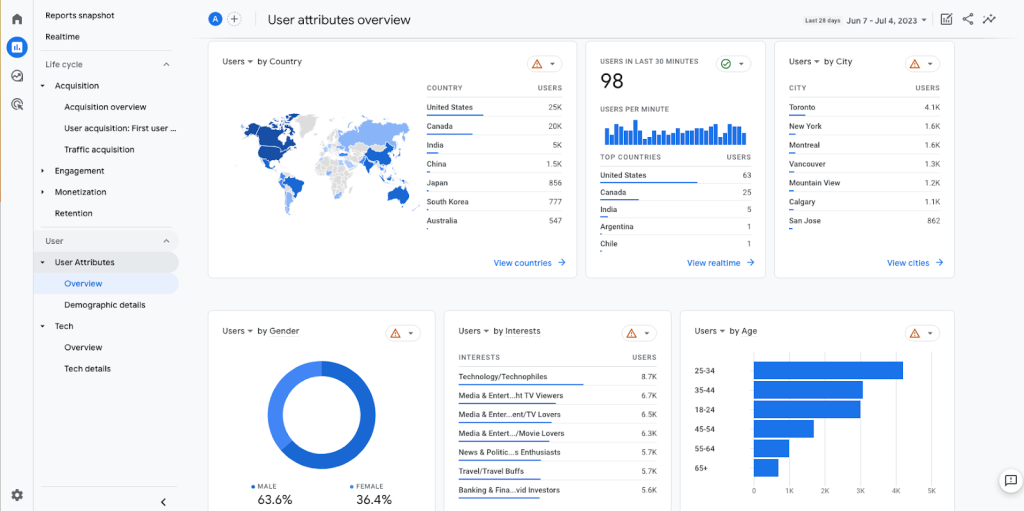
Using this tool can give you an idea of how to tailor your brand messaging for a personalized shopping experience.
For example, if a majority of your audience are Gen-Zers and millennials (within the age of 12 – 43), then your web content needs to be relatable and visually-engaging. You can also consider promoting your products on TikTok and Instagram — the top two social platforms used by shoppers in this category.
- Conduct customer surveys and interviews to find out what they (really) want from your brand, the bottlenecks they’re experiencing, how you can improve your product offerings, etc.
Tools like Hotjar and SurveyMonkey allow you to embed survey and feedback forms on your website. This way, you can collect the data right on site without sending users to an external URL.
For example, if a user wants to leave your site without taking any action, you can use an exit-intent survey to capture their feedback on why they’re leaving and what might have prompted them to. Your questions can be:
We’re sad to see you go! What is your reason for leaving?
Here, list at most four possible options that could have prompted their action. Also, give room for custom answers.
What can we do to improve?
This can be in a paragraph format to enable users to express their concerns in detail and how you can serve them better.
2. Optimize your website for conversions:
Your website (or eCommerce store) is where your customers come in contact with your product and make their purchase decisions. It must be optimized to convert (or at least, show prospects your products are good). It’s not enough to top the search results for your product keywords. Are your web visitors converting? If not, why’s that? Here are a few strategies for conversion optimization.
- Understand what’s happening with your conversion flow and checkout process. This best happens when there is high traffic but little to no conversions. If you have the same issue, take a look at your entire conversion funnel to understand why visitors leave your site before converting.
To do this, use Hotjar to see first-hand how users interact with your site and the issues they experience before checkout. HotJar has a useful resource showing you how to do this. Read it here.
This tool has a session recording and heatmap feature where you can see playbacks of users scrolling, moving and clicking on your site. This is how the scroll map (on the left) and heatmap (on the right) look in action:

Both features show how users interacted with your product and the most-clicked pages, how long they stayed on the page, what they did, and where they encountered roadblocks before dropping off.
- Fix conversion blockers. Using the data obtained from the preceding step, identify and address any issues preventing visitors from taking action on your site. These are called conversion blockers and they could be one or a couple of reasons – non-clickable elements, bugs, poorly-placed CTA (call to action), etc.
Session recordings lets you spot the conversion blockers on your site so that you can fix them. See this example below:

From this recording, the repeated red dots signify that the shopper clicked the CTA three times before realizing there’s a size-selection process. In this case, you can choose to change the color of the boxes to a brighter one or increase the size.
- Add FAQs to your product pages. What are the common questions customers ask? Dedicate a portion of your product pages to address these concerns. This way, users can find answers to what they’re looking for and make faster purchase decisions.
- Use breadcrumbs to improve navigation. Breadcrumbs are like a compass. They help users (and search engine bots) understand where they are and how to backtrack to the previous pages they visited on your site. Adding breadcrumbs to your ecommerce store can help users find the products they need faster without getting “lost” or “confused,” especially when you have lots of product pages.
- Improve page load speed. If your page loads slowly, users might get frustrated and leave your site. This alone can cause a 20% decrease in conversion rate. That said, ensure your website loads quickly by using the right image sizes, limiting the number of HTTPS requests and minimizing javascript files.
Read more about optimizing your product pages and improving website speed.
3. Run paid ads (PPC) on your conversion channels:
PPC (pay-per-click) is another powerful strategy for driving targeted traffic to your online store and increasing conversions.
Instead of relying on SEO (that’s long-term), you can take advantage of PPC ads to top the search results for relevant search queries like this:
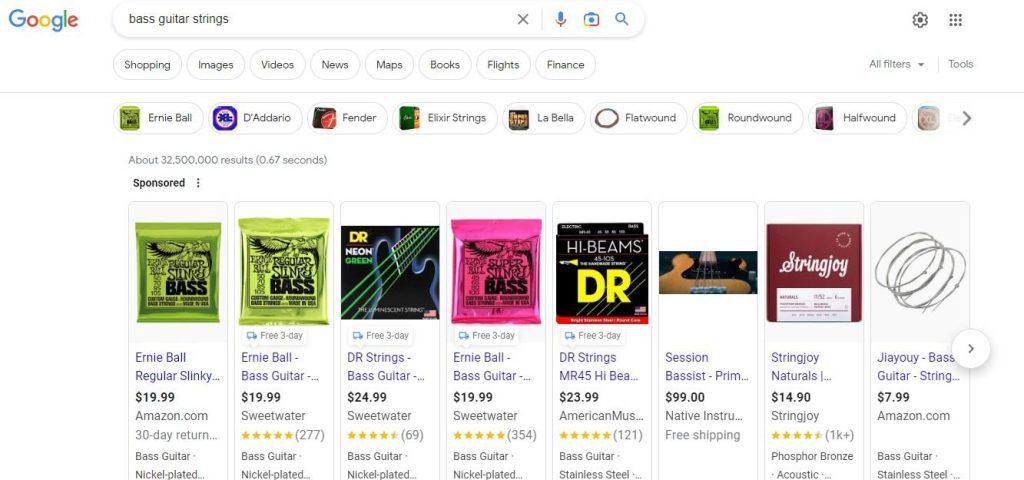
And if your ad is compelling, it can attract high-intent shoppers who are ready to buy.
Another advantage of running paid ads is remarketing. You can display your ads to re-engage users who previously interacted with your content but didn’t convert.
Here are some tips to start with:
- Look into your marketing strategy. What channels are driving the highest conversions? This could be organic search, email marketing, or social media. Focus on these channels for your paid ads to drive more conversions and maximize ROI.
- When conducting keyword research for your ad campaigns, prioritize long-tail keywords with high conversion intent. These keywords are often less competitive and have a low cost-per-click (CPC)—the amount you pay whenever a user clicks on your ad.
The Google keyword planner is an invaluable tool that gives you new keyword ideas related to your product. It also provides insights into the competition level and search volume.

- Next, refine your keyword list using SEMrush or any other SEO tool. For best results, prioritize keywords with commercial or transactional intent. Searchers in this category are either looking for products that’ll solve their problem or are ready to buy right away.
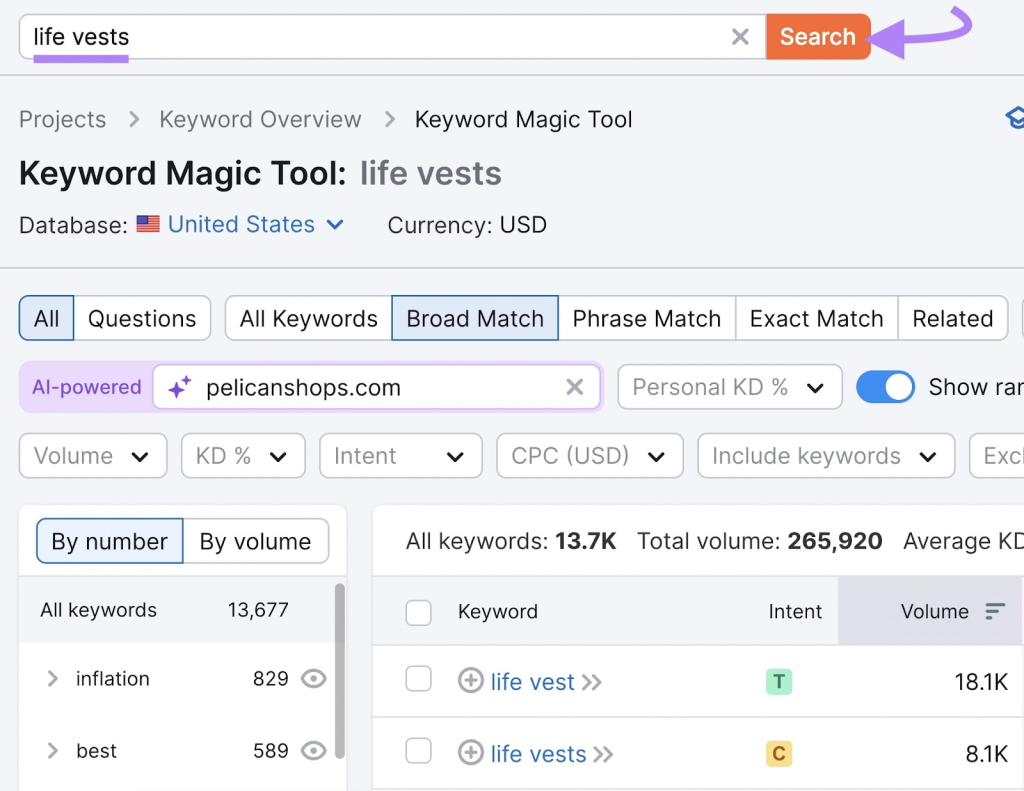
- You can also take a sneak peek into your competitor’s PPC strategy and see the keywords they’re targeting for PPC:
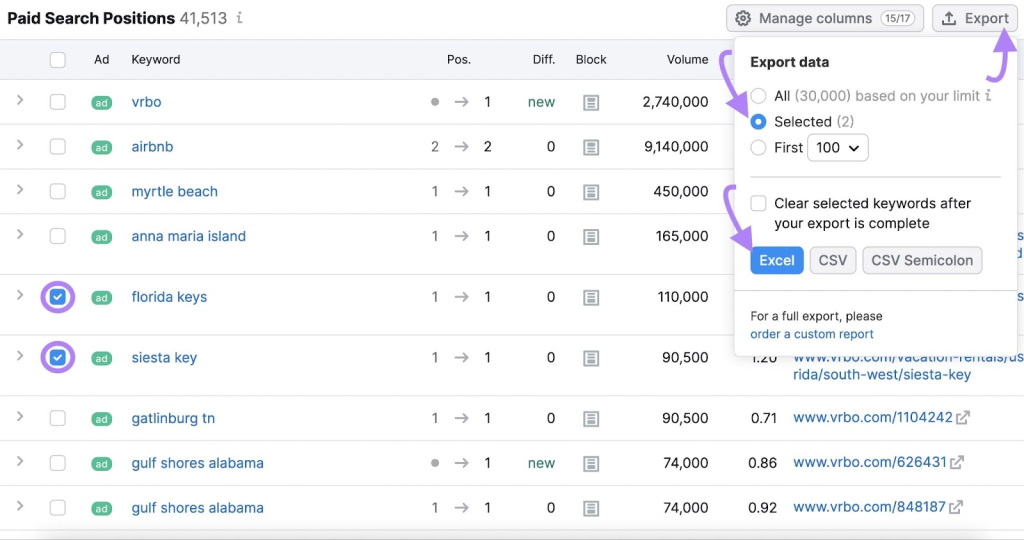
- For your ad landing pages, start with an attention-grabbing meta title or description that clearly states your product’s benefits to your target market. Leverage power words such as ‘free,’ ‘50% off,’ etc, to incite a click-through. Also, add your primary keywords naturally in the headline or meta description to appear for the right search queries. See this example below:
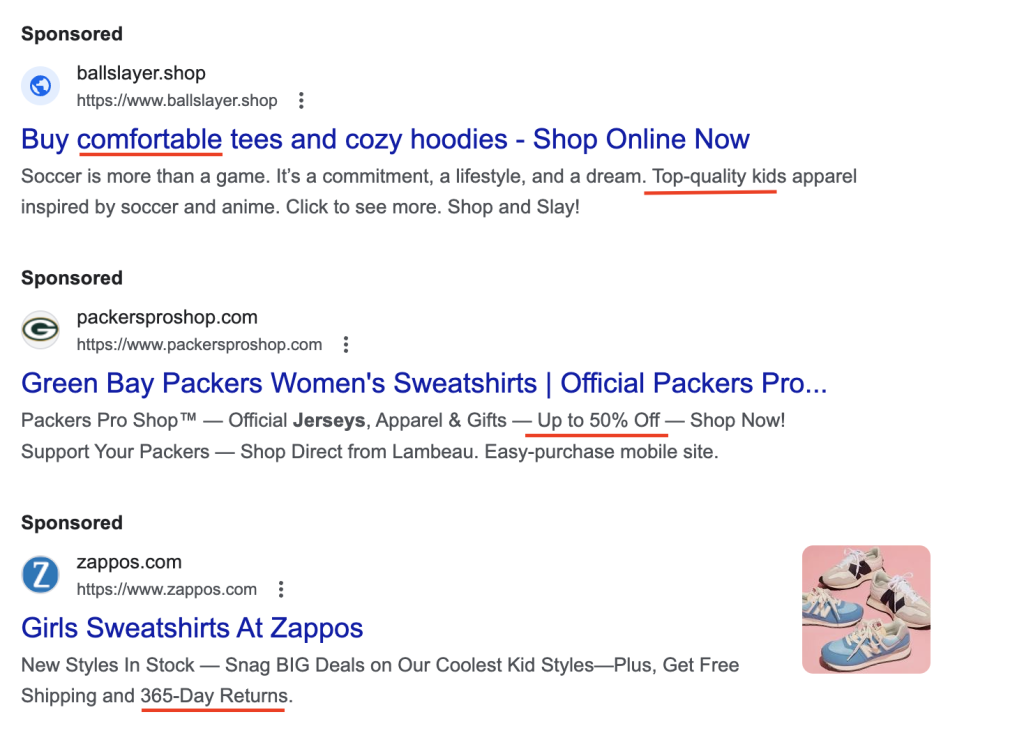
- The page copy (description) should detail the core benefits of your products to your audience and how it addresses their pain points. This information can help them make informed decisions and convert faster. See this example from the Sharkbite Hydration landing page. I love how they highlighted “optimal hydration … replenish vital nutrients lost during intense workout” which is what athletes or people engaging in intense workouts need:
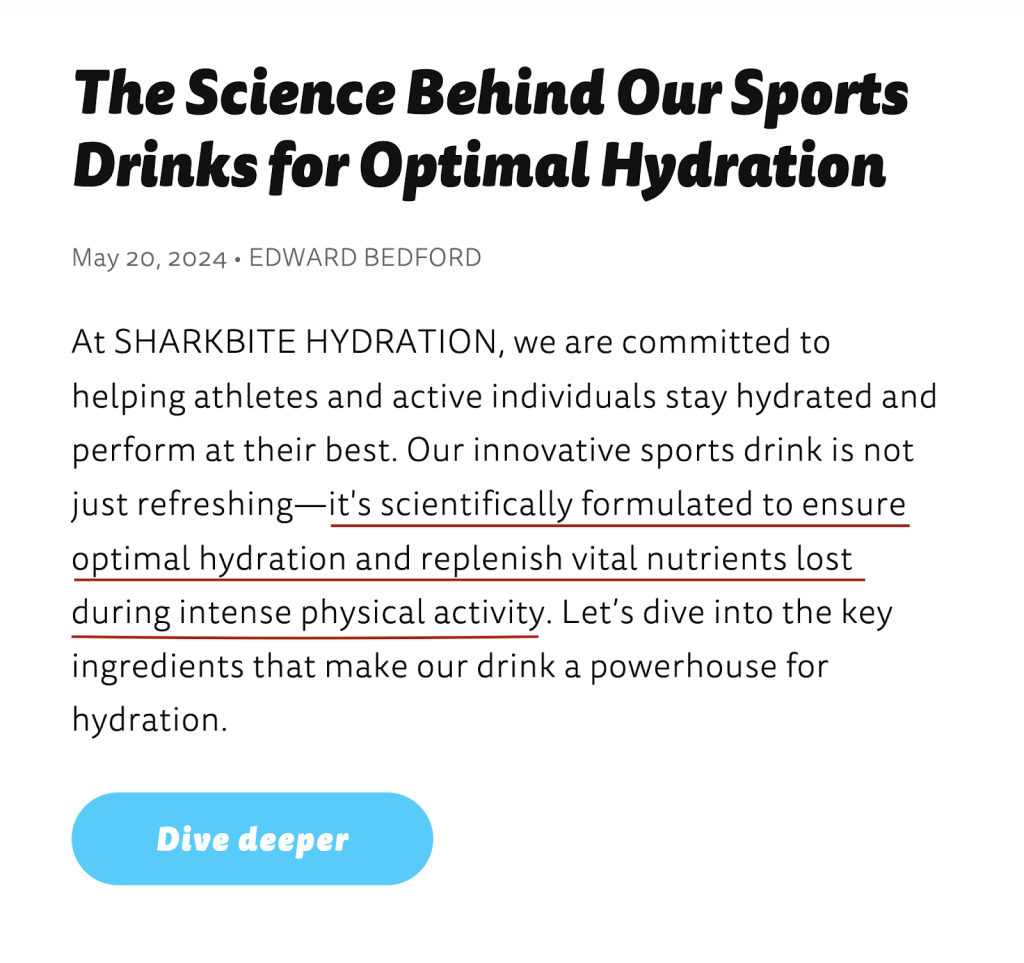
- The landing page (for SharkBite Hydration) also features their top products with a simple CTA:
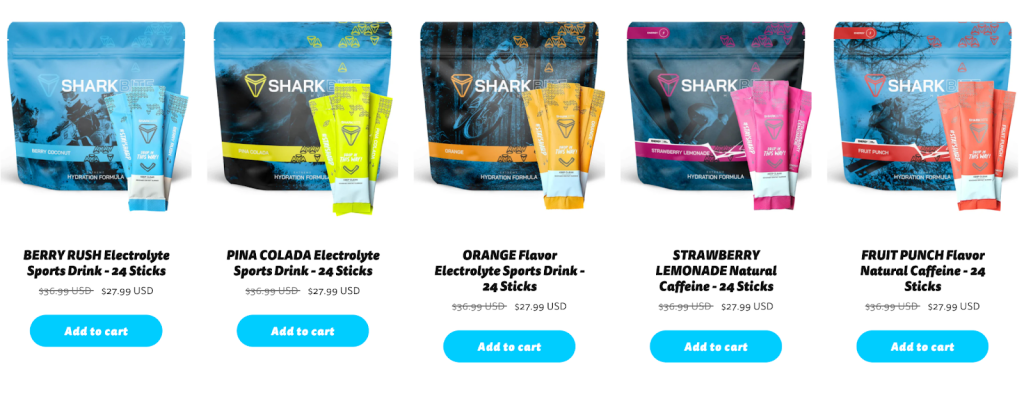
Remember to keep your CTAs relevant, compelling and straight to the point!
- If you are running display ads, use high-resolution visuals that display the best angles of your product.
- Use schema markup to provide more information about your products and appear on rich results.
- Most importantly, your landing page should be well-optimized for users and search engines. Focus on making their purchase journey swift, enjoyable and efficient.
Read more: How to create successful PPC ads.
4. Add user-generated content on your product pages:
User-generated content is a type of content where customers share their experiences and opinions about your products. It could be as ratings, reviews, video feedback, or images and is (very) effective in influencing a customer purchase decision. Don’t take my word for it:
- 90% of customers say they prefer it to promotional branded content.
- 60% of consumers say content from their network influences their purchase decisions
- Over 80% of consumers are more likely to purchase from a brand that uses UGC.
How can you take advantage of this?
Humans have an innate desire to fit in. When we see people excited about a product, we also feel a sense of belonging and trust in the product. For you, it’s an opportunity to create a community centered around your brand, increase brand awareness, drive user engagement and conversions. Here’s how:
- If you have an awesome product consumers are raving about, display the reviews on your ecommerce sites, especially your product pages. Seeing others’ positive experiences can compel potential customers to make a purchase.
- If you don’t have any reviews yet, run branded campaigns or contests encouraging customers to create and share content related to your brand. Offer incentives like discounts or giveaways to motivate participation.
- Always respond and engage with users who share content about your brand. If it’s on social media, you can repost the content on your page to show that you value their input.
Using this strategy, you’ll convince those about to bounce off your conversion page to stay and follow through with their purchase.
5. Showcase your products with high-quality visuals:
Think about this: You’re about to buy a lampstand for your bedroom. During your research, you stumbled on an online store with crappy photos and descriptions. Would you buy it? Obviously not. That is the power of using quality visuals.
It is (so) important that 67% of online shoppers find it more valuable than customer reviews. They are also 1.8x more likely to purchase if you add a detailed product video.
The goal of having high-quality visuals in your e-commerce store is to simulate the real-life store experience for your customers. Here are four ways to do this:
- Create a 360 product view to show customers what to expect when they purchase your product. This alone can increase your conversion rate by 40%. If you don’t have videos, provide product images from different angles. The pictures should be large enough to allow users to zoom into the details.
- Video explainers are also effective. Go beyond the norm to give customers a detailed walkthrough of your product. This can explain the product benefits and how it’s used; you can even hire an influencer to market it for you. If you’re wondering if this works, yes, it does.
73% of online shoppers say they’re more likely to purchase after watching an explanatory video. And 4 out of 10 consumers buy a product recommended by an influencer.
- Bring your past/current customers on board! Happy customers are always willing to share their experience with your products, and it’s a perfect opportunity to get social proof.
- Use augmented and virtual reality to give your customers a more personalized in-store experience and help them make informed purchase decisions. See this example from Sephora:
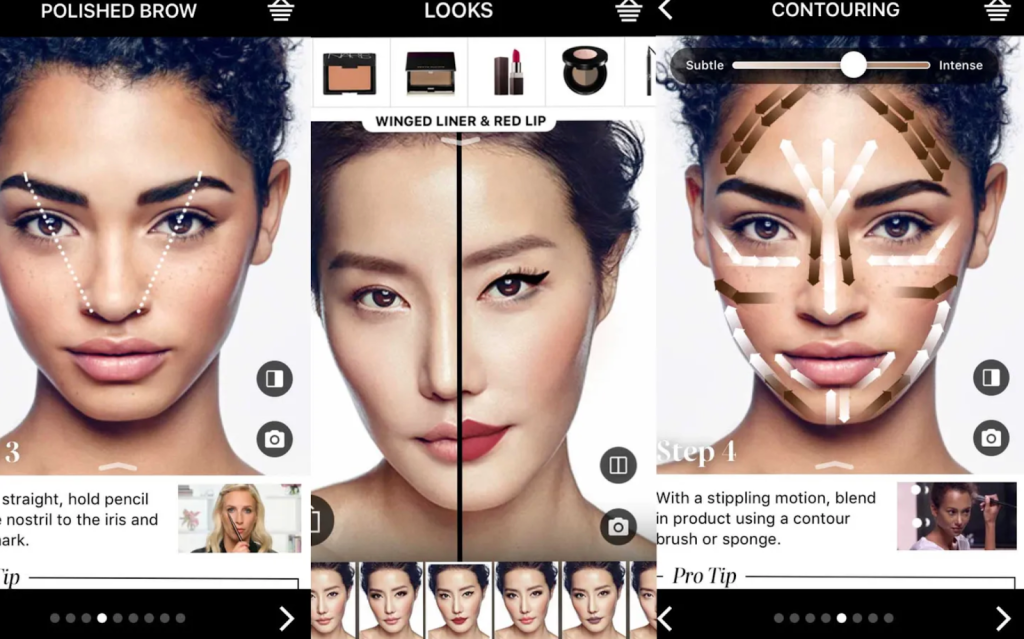
6. Add live chat or chatbot to your website/landing page:
When people get stuck on your site and need to ask questions, you might not always be available to answer them. Instead of waiting, 55% of customers say they prefer to talk to a chatbot rather than a live agent.
Chatbots are computer programs designed to simulate a human live agent through text or voice interactions. They use AI and natural language processing to engage in real-time conversation with users and answer their queries without human intervention. You can also use them to welcome first-time visitors, collect customer feedback, and support customers during their purchases.
- Take note of all the repetitive questions most customers have concerning your brand/products (you can ask the sales team for more information) to create an FAQ library that you can easily add to your chatbot.
- Keep your chatbot’s flow simple and natural. The last thing you want is for your customers to feel like they’re chatting with a robot and may not get the help they need.
- Customers always have questions at every stage of their purchase journey. Use chatbots to provide quick and actionable answers to them before, during and after purchase.
- Remember to integrate the chatbot with your CRM (customer relationship management) software. Chatbots collect a lot of customer data, which may help inform your marketing strategies.
Tip: Sometimes, users might need assistance beyond your chatbot’s capacity. Be transparent about this limitation and offer smooth human hands-off to a human representative.
7. Streamline checkout process:
You don’t want to tick all the boxes and lose customers at the final stage—the checkout process. This is why you need to make your checkout process clear and frictionless to encourage shoppers to finalize their purchases.
There are several conversion blockers that stem from the checkout process and cause shoppers to abandon their carts. The top four of them are:
- Adding extra costs like high shipping fees, taxes, or hidden fees accounts for why 48% of online shoppers abandon their carts during checkout.
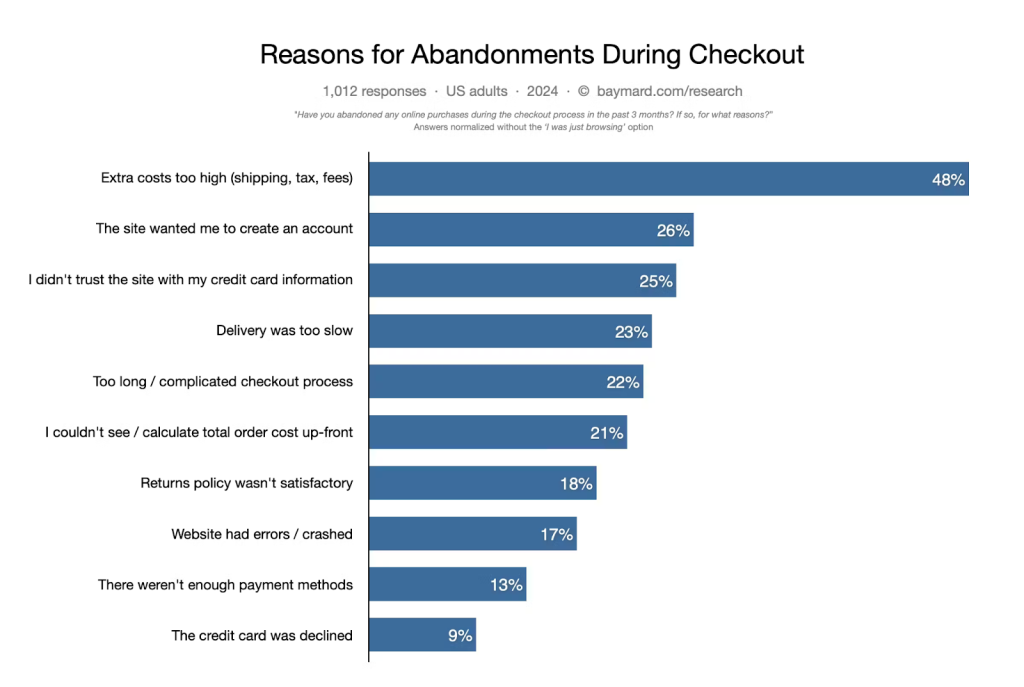
What to do: Be transparent about all the fees on your product pages.
- Creating accounts. Let’s face it: not everyone is ready to commit to your brand after their first purchase. 26% of users stopped their purchase when required to create an account.
What to do: If it’s compulsory for users to create an account before purchase, provide an easy sign-in process through Single Sign On systems with Google, Amazon, or their social profiles.
Another option is to allow users to continue as guests when they purchase from your site for the first time. You can also offer incentives to encourage them to create an account after their purchase.
- Security issues. 25% of users halted their purchase because they couldn’t trust the website with their credit card information. It’s easy to abandon carts when you notice that the site looks crappy and lacks visible security measures like SSL certificates and trust badges.
What to do: If you haven’t already, install an SSL certificate on your site and display other security measures to build customer confidence during checkout.
- Too long/complicated checkout process. Do you ever feel encouraged to complete a purchase that requires filling out lengthy forms? I don’t, and your customers may not, either.
What to do: Focus on the vitals – the customer’s name, shipping address, billing address and contact information. For returning customers, consider the auto-fill options to streamline the purchase process.
Tip: Offer multiple payment options to accommodate all your customers (especially if you’re serving different markets). Also, if one of the payment methods fails, users can easily switch to another to complete their purchase. Popular payment options to consider are:
- Digital wallets like PayPal, Apple Pay, or Google Pay
- Credit cards
- Debit cards
- Payment gateways like Stripe
- Bank transfers
- Payment on delivery (for local transactions)
Read more: How to improve the ecommerce checkout process.
8. Add cross-sell and upsell offers:
Cross-selling involves inviting customers to buy products related to or complementary to the one they’re about to purchase. For example, you can offer solar batteries at a discounted price to someone who wants to buy solar lampstands.
Upselling, conversely, offers a better, more efficient version of the product before or during the checkout process. An example in this case would be offering a solar lamp stand with a longer battery life. Both strategies, when combined, can help increase average order value and revenue.

Before cross-selling or upselling, identify products that complement each other and will be helpful to your customers. Ask yourself: What products are usually purchased together? What products do customers buy as add-ons to their purchases on your site? Always consider offering value to your customers rather than just increasing sales.
Also, consider the timing and relevance of your offers. Your recommendations should be based on the customer’s browsing history, past purchases or the product they’re about to buy. This way, the additional items feel valuable to their purchase rather than another sales tactic.
Tip: Be careful not to overwhelm customers with too many product recommendations. Instead of cross-selling or upselling at every stage, choose strategic moments, such as during checkouts or on the product page.
9. Run promotional offers:
Consumers love promos.
This research from RetailMeNot revealed that eight out of nine (88%) online customers buy from a new brand with promotional offers. Another 94% said they search for special deals and offers when shopping online.
Running these promotional offers is your best chance to reach new customers and re-engage those interested in your products but not ready to buy. Luckily, there are diverse out-of-the-box ideas that you can mirror in your promotional strategy.
- Run flash sales with discounts to create a sense of urgency and entice customers to buy on the spot. An effective way to do this is to add a countdown timer alongside the offer.
- Consider offering discounts or gifts to first-timers. You can display it as pop-ups on your website to encourage immediate conversions.
- Leverage seasons to launch sales campaigns when bringing in a new collection or products.
- Combine two products and sell at a lesser or discounted price. This encourages customers to make smart purchase decisions. See an example below:
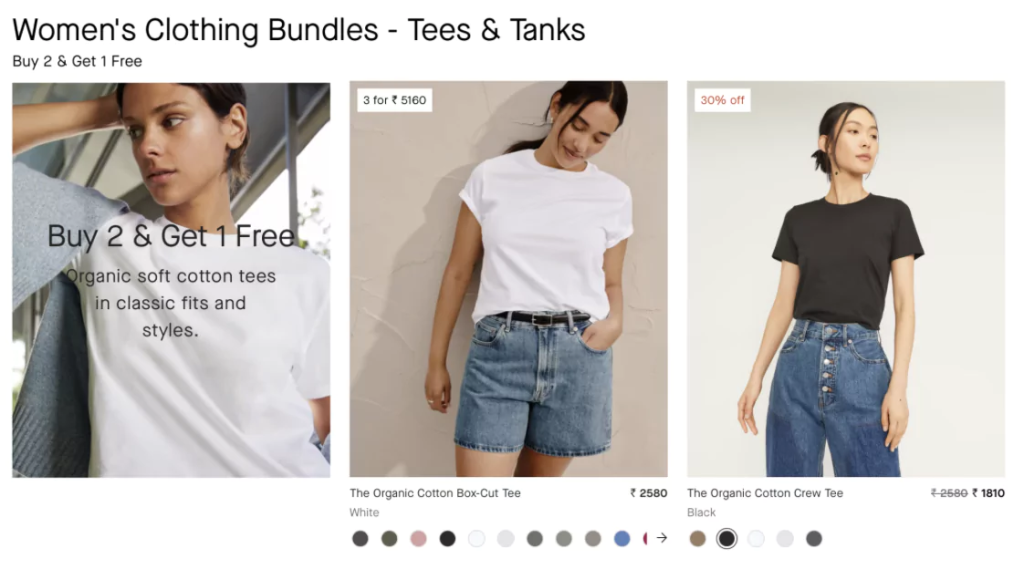
- Offer free shipping for first-time customers or those who spend more. See this example:
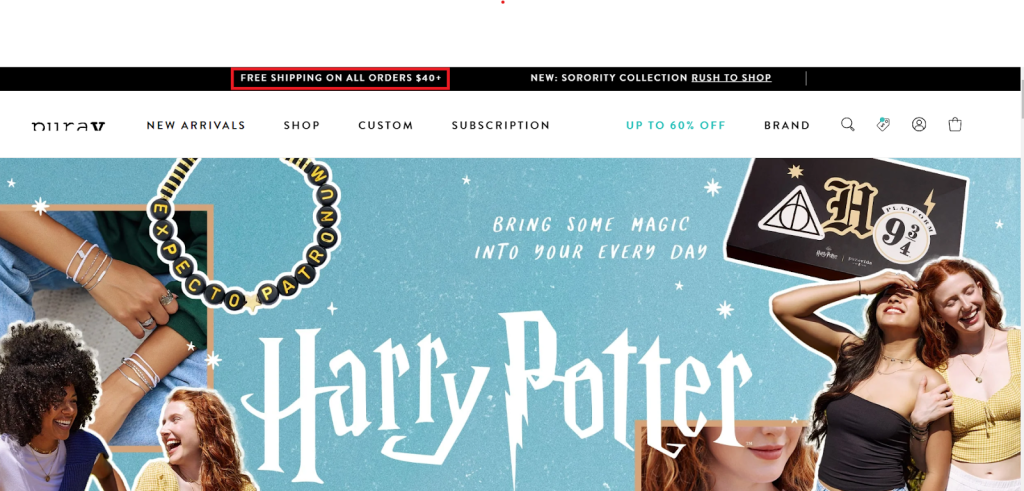
10. Consider affiliate marketing:
Affiliate marketing tactics can be employed in ecommerce to boost brand awareness and increase sales. In this case, the affiliate (the person marketing the products) chooses products from your site and sells them on their site for a commission. The affiliate bears the costs of marketing your products while you pay them a commission for each successful sale.
To run your own affiliate programs:
- Start by setting specific goals, i.e., what you want to achieve with the marketing program. For example, your goal might be to generate 1000 sales for your best-performing product and increase conversions by 5%.
- Set the right KPIs (key performance indicators) to track and measure success. These should be based on your goals to help you see how much progress you’re making in achieving them.
- Decide how you want to compensate your affiliates. You can offer commissions based on clicks/sales, pay a flat fee for every conversion or offer a % of all the sales generated by the affiliate.
- Source for credible affiliates through affiliate networks, agencies or databases.
- Make ready all the vitals to help affiliates market your product efficiently. This includes product samples, marketing materials, creative briefs, etc.
- Keep affiliates motivated by offering incentives such as cash bonuses, product merch, store credits, etc.
Conclusion:
To cap it all, I’ll add two extra tips:
Always add guarantees to instill trust and confidence in your target audience. Trust is the trademark of ecommerce, and there’s nothing more powerful than reassuring customers that they’re making a smart purchase decision. You can offer a 30, 60 or 90-day money-back guarantee, like Feetures does:
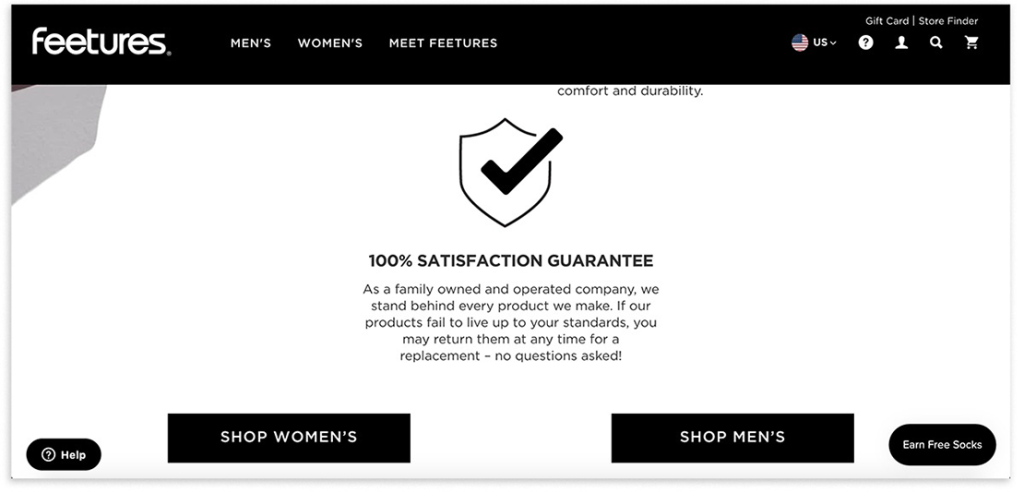
Another option is leveraging your USP (unique selling proposition). For instance, if you’re in a competitive market but sell at lower prices than your competitors, you can use this to attract more customers.
Secondly, partner with an e-commerce marketing agency.
You can always try to DIY, but bringing an expert on board can help you increase sales (faster). Not trying to be salesy, but at HigherVisibility, we take a holistic approach to improving your conversion rates. We don’t just enhance your revenue by implementing one-off tactics; our strategies address the root cause(s) of your issues to deliver sustainable results. Our goal? To boost your online presence and increase your bottom line revenue. Reach out today and request a free proposal that details our custom strategy for your store.
